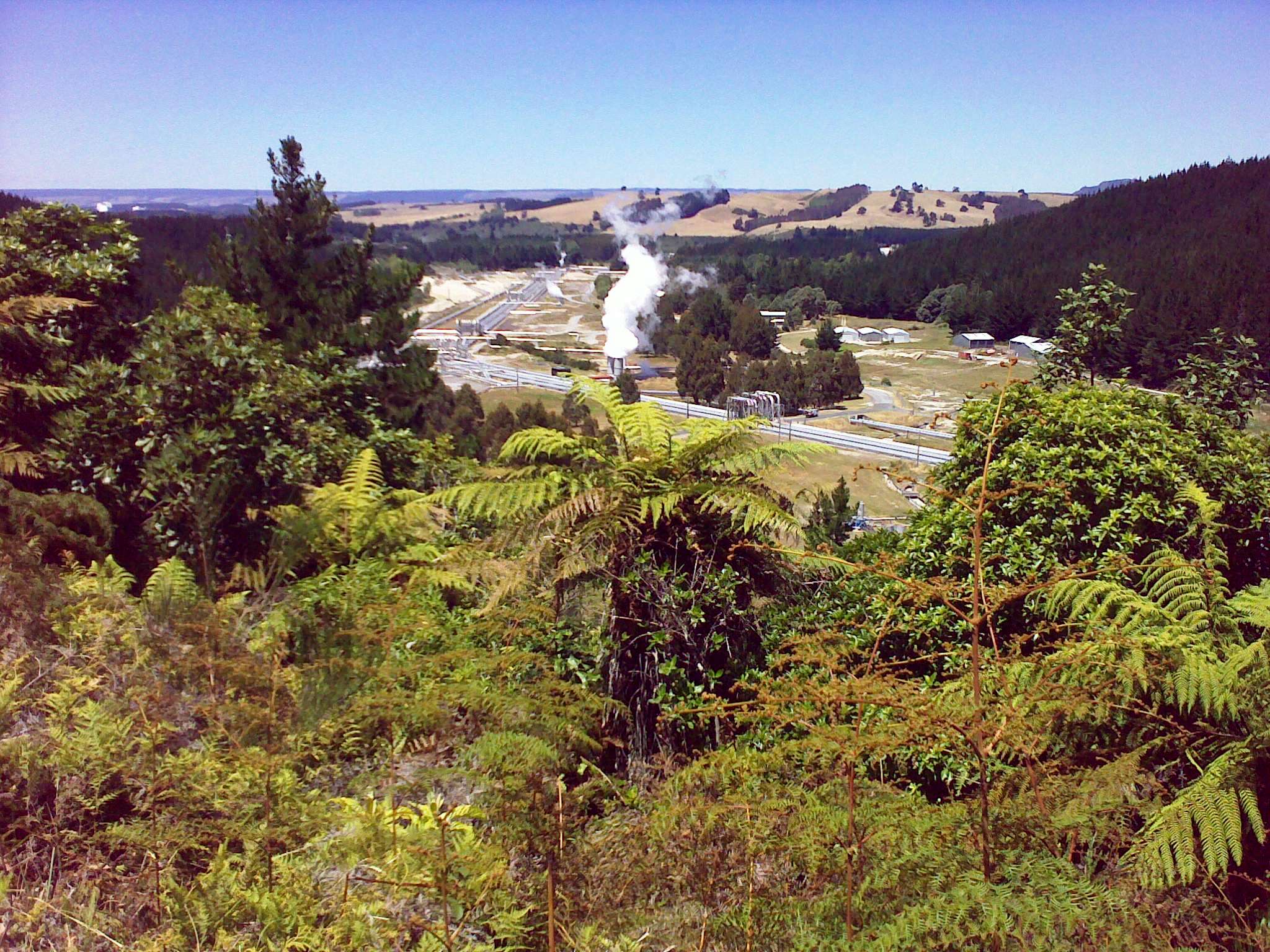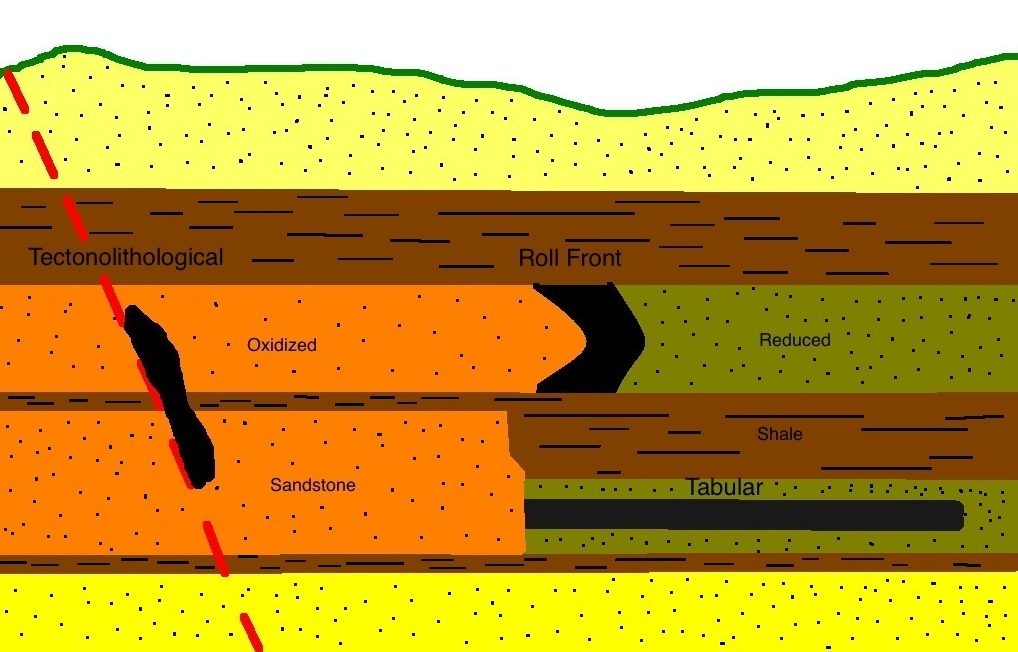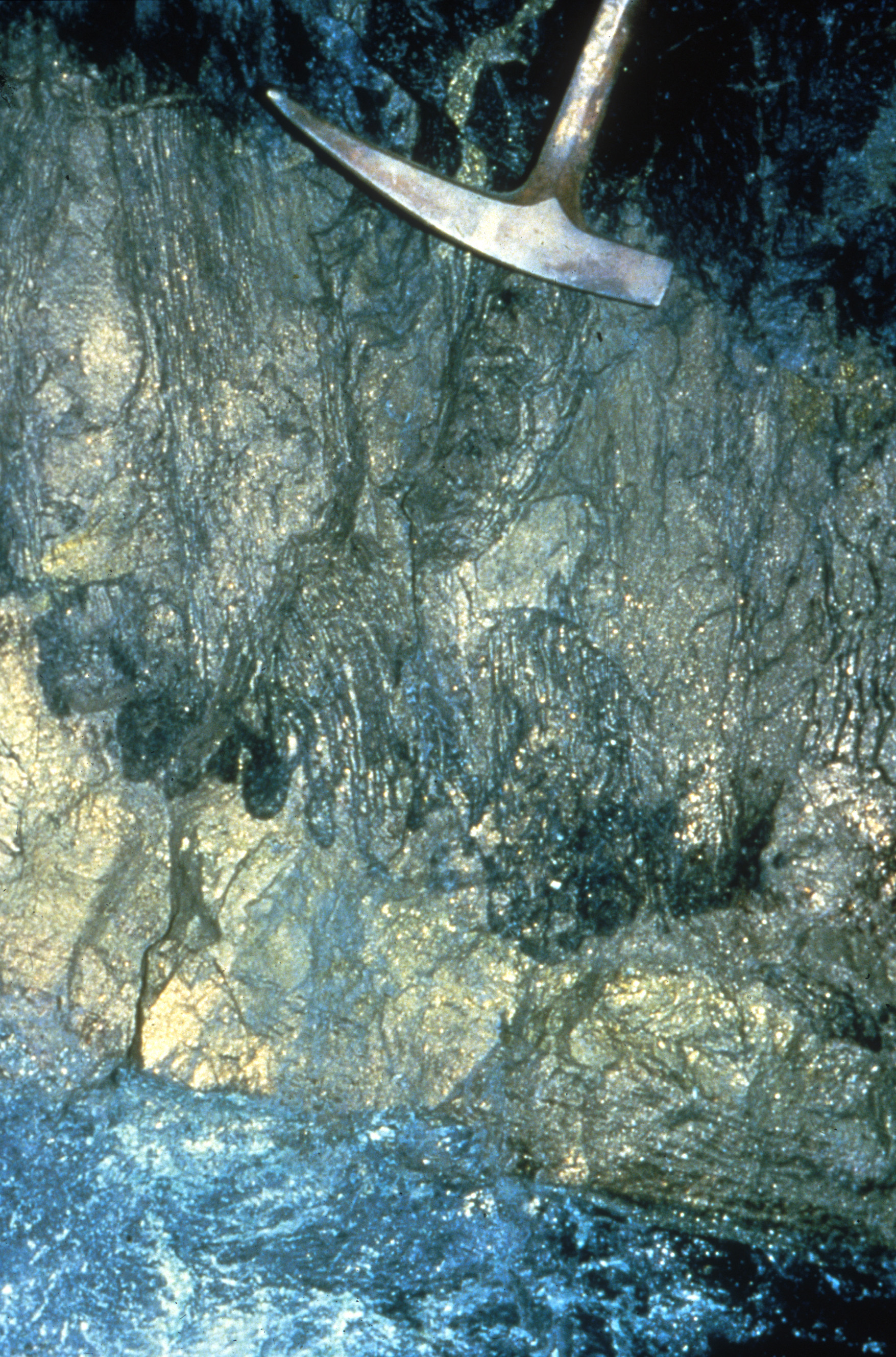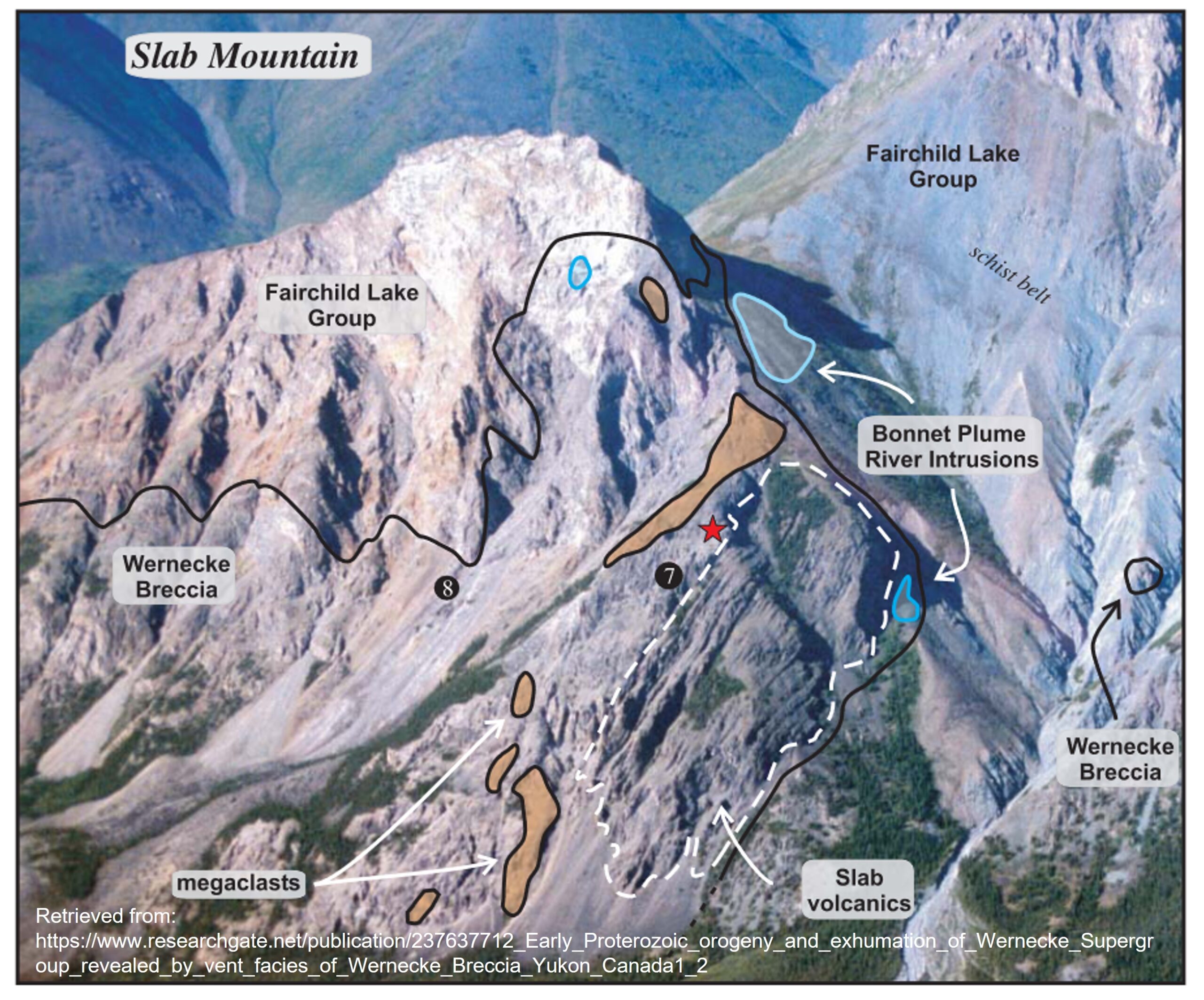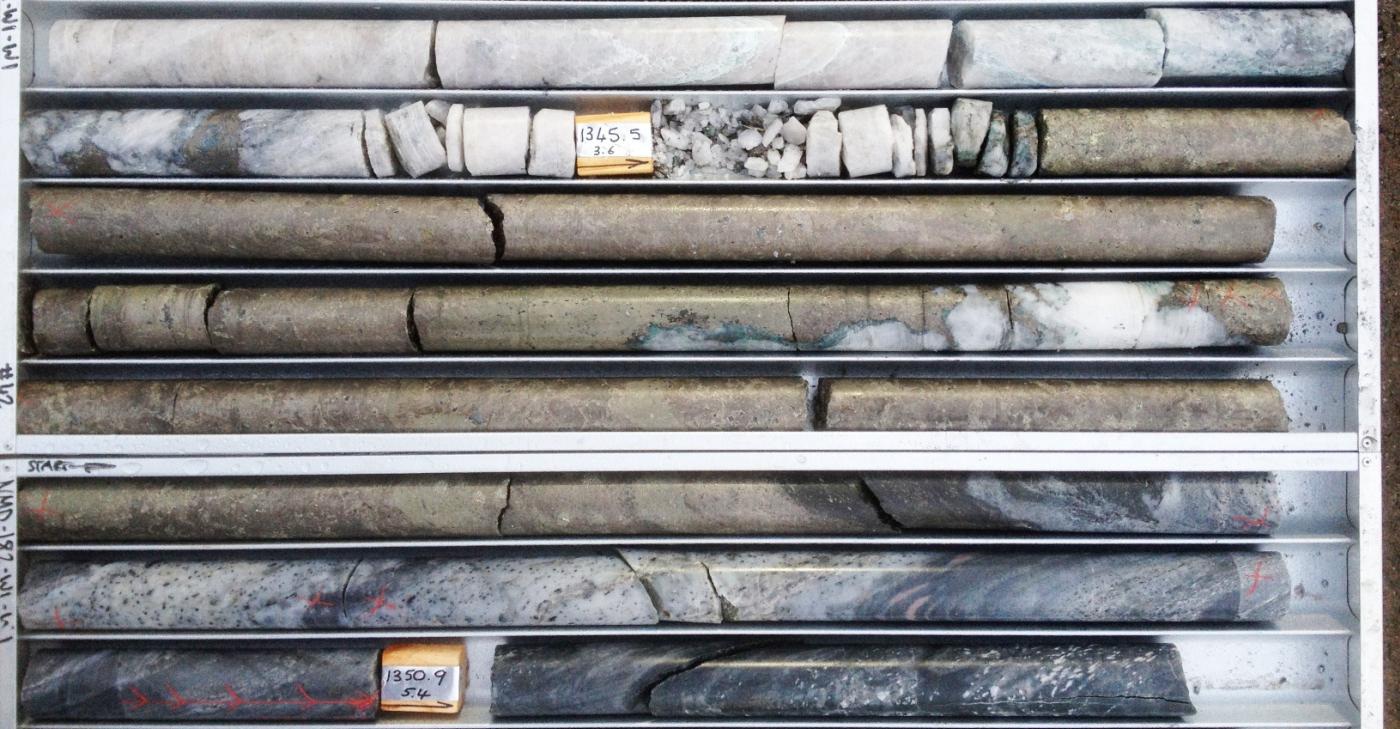While the loss of a large funding partner can definitely be a set-back for a small junior mining company, Peregrine has always seemed to come out smelling like roses. With each partner Peregrine has significantly advanced the project without spending their own money, ended up with invaluable exploration data and continued to retain full ownership.
[box type=”info” align=”aligncenter” ]Disclaimer: This is an editorial review of a public press release and not an endorsement. It may include opinions or points of view that may not be shared by the companies mentioned in the release. The editorial comments are highlighted so as to be easily separated from the release text and portions of the release not affecting this review may be deleted. [/box]
VANCOUVER, BRITISH COLUMBIA–(Marketwired – Jan. 16, 2014) – Peregrine Diamonds Ltd. (“Peregrine” or “the Company”) (TSX:PGD) is pleased to report that bulk sample Batch C, from the CH-6 kimberlite pipe on Peregrine’s 100 percent owned Chidliak Diamond Project (“Chidliak” or “the Project”) in Nunavut, Canada, which weighed 182.1 dry tonnes, returned a diamond grade of 2.87 carats per tonne (“cpt”). A total of 523.5 carats of commercial-size (+0.85 mm) diamonds was recovered, including 42 diamonds one carat or larger and 133 diamonds over 0.50 carat in size. The largest diamond is an 8.87 carat white/colourless octahedron. A significant portion of the parcel is gem diamonds and a population of yellow stones is present. Sample Batch C represents the final portion of a bulk sample weighing 404.2 dry tonnes that was collected by trenching the CH-6 kimberlite in 2013. As reported on December 3, 2013, the first 222.1 tonne portion of the bulk sample returned a grade of 2.70 cpt. The combined grade of the 404.2 tonne sample is 2.78 cpt and 1,124 carats of commercial-size (+0.85 mm) diamonds were recovered. An independent diamond valuation of the 1,124 carat parcel will be completed this quarter in Antwerp, Belgium. At a grade of 2.78 cpt, CH-6 is one of the highest grade kimberlite pipes in the world*.
[box type=”note” align=”aligncenter” ]
When we last talked about Peregrine in September they were reporting on their DeBeers-funded exploration and sampling program at their Chidliak Project in Nunavut, Canada. Since that time, DeBeers announced that they had elected not to earn-in to the project and were essentially walking away. This is the second big partner to walk away from the Chidliak Project after BHP Billiton in 2011. While the loss of a large funding partner can definitely be a set-back for a small junior mining company, Peregrine has always seemed to come out smelling like roses. With each partner Peregrine has significantly advanced the project without spending their own money, ended up with invaluable exploration data and continued to retain full ownership.
Most option and joint-venture agreements are structured so property owners retain full ownership if commitments are not met by the joint venture partner. Very often these commitments include tiered exploration spending requirements and regular payments to the claim-holder. If a partner walks away from a project they very often end up with nothing. In the case of Chidliak, Peregrine has 100% ownership and many years worth of exploration data to help advance their project.
The Chidliak Project includes 64 kimberlites identified by the company and is concluding a bulk sampling on the CH-6 kimberlite. This release is the final result of that sampling program.
[/box]
Diamonds of special note described by the Saskatchewan Research Council (“the SRC”) include the following:
- 8.87 carat white/colourless, transparent octahedron with minor inclusions
- 5.83 carat white/colourless transparent octahedron with inclusions
- 4.62 carat off-white, transparent octahedron
- 4.11 carat white/colourless, transparent octahedron with minor inclusions
- 3.02 carat white/colourless distorted octahedron with minor inclusions
Mr. Howard Coopersmith, Peregrine’s Independent Qualified Person for dense media separation (“DMS”) processing and diamond recovery stated, “These latest bulk sample results from the CH-6 kimberlite, along with the results from the first 222 tonne portion of the sample, confirm a trend towards high quality diamonds in the larger size classes and an overall consistency in the diamond population, size distribution and grade. The independent market valuation of the 1,124 carat parcel, and the modelling of the valuation results, should allow for preparation of a resource statement for this high grade kimberlite pipe.”
Mr. Eric Friedland, Peregrine’s CEO said, “We are pleased that the results of the 2013 bulk sample have confirmed that CH-6 is one of the highest grade kimberlite pipes in the world. We look forward to the results of the diamond valuations expected later this quarter given the quality of the entire diamond parcel, especially the stones a half carat and larger.”
[box type=”note” align=”aligncenter” ]
Peregrine is telling us that they have “one of the highest grade kimberlite pipes in the world”. I can’t tell you if that’s true or not, but compared to other Canadian projects, Peregrine’s grade does look very high. For comparison, the “high grade” Diavik diamond mine in the Northwest Territories, Canada produces less than 3 carats per tonne (cpt). Stornoway’s advanced Renard Project in Northern Quebec is has a reserve estimated at 0.78 cpt. Nunavut’s first and only operating diamond mine, the Jericho Mine produced at about 0.65 carats per tonne, before being shut down due to poor economics.
[/box]
The size distribution, shape and colour of the 90 diamonds one carat in size or larger from the combined 1,124 carat parcel are described by the SRC in the following three tables.
| SIZE DISTRIBUTION | DIAMOND SHAPE | DIAMOND COLOUR | |||||
| Size Class (Carats) | Number of Stones | Octahedra | 51% | White/Colourless | 36% | ||
| 1″>1 1 | 90 | Tetrahexahedra | 1% | Off-white | 36% | ||
| 1 2 | 27 | Fragments, Irregulars and Aggregates | 39% | Yellow | 11% | ||
| 1″>1 3 | 11 | Macles | 9% | Grey and Brown | 17% | ||
*The diamond grade of bulk samples collected from CH-6 as determined by DMS processing may not be fully representative of the overall diamond grade of the pipe due to a number of factors including the limited area and depth from which the trench sample was collected.
BULK SAMPLE INFORMATION
The details of the bulk sample collection from CH-6 were reported on April 23 and June 3, 2013. The following table summarizes diamond results from the CH-6 kimberlite.
SUMMARY OF BULK AND MINI-BULK SAMPLE RESULTS FROM THE CH-6 KIMBERLITE
| Batch | Sample Weight (dry tonnes) |
Numbers of Diamonds According to Sieve Size Classification (mm) | Total | Carats (+0.85 mm) |
Grade (cpt) (+0.85 mm) |
Carats (+1.18 mm) |
Grade (cpt) (+1.18 mm) |
||||||
| +0.85 -1.18 |
+1.18 -1.70 |
+1.70 -2.36 |
+2.36 -3.35 |
+3.35 -4.75 |
+4.75 -6.70 |
+6.70 | |||||||
| A** | 213.8 | 2967 | 3233 | 1436 | 595 | 139 | 34 | 0 | 8404 | 578.75 | 2.71 | 538.66 | 2.52 |
| B** | 8.34 | 222 | 135 | 60 | 26 | 3 | 1 | 0 | 447 | 21.74 | 2.61 | 18.85 | 2.26 |
| C | 182.1 | 2899 | 2825 | 1184 | 474 | 125 | 24 | 4 | 7535 | 523.46 | 2.87 | 484.54 | 2.66 |
| TOTAL 2013 Bulk Sample | 404.2 | 6088 | 6193 | 2680 | 1095 | 267 | 59 | 4 | 16386 | 1123.95 | 2.78 | 1042.05 | 2.58 |
| 2010 Mini-bulk*** | 13.77 | 137 | 216 | 108 | 51 | 10 | 1 | 0 | 523 | 40.04 | 2.91 | 37.97 | 2.75 |
| **Diamond results reported on December 3, 2013 |
| ***The CH-6 mini-bulk sample was processed by DMS and diamond recovery was completed at the SRC, results were reported on December 6, 2010 |
[box type=”note” align=”aligncenter” ]
Consider that a carat is 0.2 grams or 0.007055 ounces. Since a potentially economic grade is so low, huge samples are needed in order to determine the potential value of a kimberlite. From this 400+ tonne sample Peregrine has received less than 225 grams of diamonds! 2.78 cpt is roughly equivalent to 0.56 g/t.
[/box]
Sample Batch C was processed by DMS at the De Beers processing facility in Sudbury, Ontario. Diamond recovery was completed at the SRC using a two stage Flow Sort x-ray sorter, a vibrating grease table recovery circuit and hand sorting. The De Beers DMS facility is rated at approximately five tonnes per hour and a 1.00 mm square mesh bottom screen was utilized. As an element of Peregrine’s Quality Assurance/Quality Control program, 104 numerically laser-etched natural diamond tracers ranging in size from 0.14 to 1.50 carats were added to the bulk sample bags comprising Batch C in the field or at the De Beers DMS processing facility. All of these diamond tracers were recovered.
DIAMOND VALUATION
An independent diamond valuation of the 1,124 carat diamond parcel will be completed by WWW International Diamond Consultants Ltd. (“WWW”) this quarter in Antwerp, Belgium. Through it’s partnership in Diamonds International Canada Ltd., WWW performs the government diamond valuations for the four producing diamond mines in Canada. In addition to estimating the current market value of the diamond parcel, WWW will also provide a diamond price model estimate. Diamond price models estimate the impact larger stones would have on potential revenue from a mine. These larger stones are typically under-represented at this scale of bulk sampling. Prior to the valuation, the diamonds will be thoroughly cleaned by deep boiling.
[box type=”note” align=”aligncenter” ]
The QA/QC process is different for diamond recovery, but the principles of quality assurance remain the same. Laser etched diamond tracers of varying sizes were added to the sample as a quality control measure. This helps the lab ensure that their recovery processes are working correctly.
[/box]
CH-6 KIMBERLITE AND VICINITY
As reported on April 2, 2012, based on the current geological model, it is estimated that CH-6 hosts 5.7 million tonnes of kimberlite to a depth of 375 metres below surface. Of the 5.7 million tonnes, 3.6 million tonnes is considered reasonably defined with good drilling support. The remaining 2.1 million tonnes has been identified with limited drilling support and the confidence level of this tonnage will be increased with more drilling. Potential exists to add significant tonnage at depths below 375 metres. This tonnage estimate does not constitute a mineral resource and there is no assurance that a resource will be identified through further exploration work at CH-6.
A technical report prepared in accordance with NationaI Instrument 43-101 requirements that outlines the CH-6 tonnage estimate is available on SEDAR and on the Company’s website.
The CH-6 kimberlite is one of 67 kimberlites discovered to date at Chidliak and it occurs in an area with an eight kilometre radius that currently hosts five other kimberlites that are potentially economic.
[box type=”note” align=”aligncenter” ]
We’ve included a location map for the project below. The main obstacle to developing this project is the extraordinary cost associated with any sort of development in the high Arctic. Diamond mines are expensive to develop on their own: Consider that Stornoway Diamond’s Renard project in Northern Quebec is expected to require more than $750 million in initial capital. The Ekati mine north of Yellowknife cost $1 Billion to construct. And those are just mine development costs: The years of exploration, feasibility studies and pre-development costs are not included. That’s a lot of resources for some tiny sparkly rocks.
That said. Diamond mines do get built and regardless of the location, a high grade deposit can spur development in the unlikeliest of places. Hopefully for investors, Peregrine will keep finding partners to help advance their projects.
[/box]
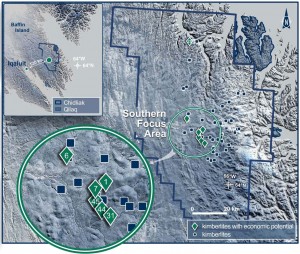
FUTURE WORK
Peregrine will utilize the diamond grade and value information from the CH-6 bulk sample and information from core drill programs completed in 2009, 2010 and 2011 to establish a preliminary revenue model and declare an initial, NI 43-101 compliant resource for CH-6 in 2014. This work is the first important step towards establishing economic viability for the Project. Additional work planned for Chidliak this year includes field work to advance other kimberlites that are potentially economic, the testing of high priority geophysical anomalies to discover additional kimberlites in the vicinity of CH-6 and preparations for a 2015 bulk sampling program. More detailed information on the 2014 program will be provided by the end of this quarter.
Mr. Alan O’Connor, Professional Geologist, Peregrine’s Chidliak Project Manager, is a Qualified Person under National Instrument 43-101 and is responsible for the design and conduct of the programs carried out by the Company at Chidliak, including the collection of the 2013 CH-6 bulk sample. Mr. Howard Coopersmith, a Professional Geologist and an independent consultant to the diamond industry, is Peregrine’s, independent, external Qualified Person for sample processing and diamond recovery. Mr. David Farrow, a Professional Geologist, of Geostrat Consulting Services Inc., an independent, external Qualified Person and a consultant to Peregrine, reviewed and verified the CH-6 geological model and tonnage estimate.
Messrs. O’Connor, Coopersmith and Farrow have reviewed this release and approve of its contents.
ABOUT PEREGRINE DIAMONDS
Peregrine is a diamond exploration and development company focused on Canada’s North. The Company has discovered two new diamond districts in Nunavut, Nanuq in 2007 and Chidliak in 2008. At its 100 percent-owned Chidliak project, located 120 kilometres from Iqaluit, the capital of Nunavut, 67 kimberlites have been discovered to date with seven being potentially economic. In April 2013, Peregrine collected a bulk sample weighing 404.2 dry tonnes from the CH-6 kimberlite. The 404.2 tonne sample returned a grade 2.78 cpt for diamonds larger than the 0.85 mm sieve size. An independent diamond valuation of the 1,124 carat parcel recovered from the bulk sample will be completed in the first quarter of 2014. At its 72 percent-owned, nine hectare DO-27 kimberlite in the Northwest Territories, located 27 kilometres from the Diavik Diamond Mine, a NI 43-101 compliant mineral resource of 18.2 million carats of diamonds in 19.5 million tonnes of kimberlite at a grade of 0.94 carats per tonne, which is open at depth, was confirmed in 2008. Peregrine also continues to evaluate earlier stage diamond exploration projects it controls in Nunavut and the Northwest Territories and through comprehensive evaluation of its extensive and proprietary diamond exploration databases, is working towards discovering additional new diamond districts in North America. A key asset being utilized in Peregrine’s search for a new Canadian diamond district is a proprietary database acquired from BHP Billiton that contains data from approximately 38,000 kimberlite indicator mineral samples covering approximately three million square kilometres of Canada.
[box type=”note” align=”aligncenter” ]
Valuation of the diamonds from CH-6 will be the next big hurdle. If the diamonds are determined to be of high gem quality it will bode very well for Peregrine. This will help them develop an attractive 43-101 complaint resource statement for the project that will potentially help them find new partners.
[/box]
[box type=”success” align=”aligncenter” ]Have a company or release you’d like us to look at? Let us know though our contact page, through Google+, Twitter or Facebook.[/box]

